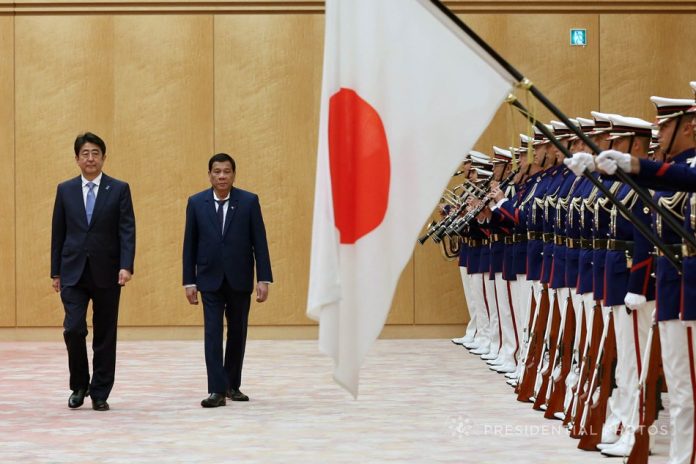
MANILA – Philippine government ministers met with a top adviser of Japan’s prime minister on Wednesday, in a effort to move forward major infrastructure projects, just hours after a visit by the Chinese president pledging to do the same.
President Rodrigo Duterte has made a $180 billion infrastructure overhaul the centerpiece of his economic policy agenda, but already into the third year of his presidency, he is under some pressure to show signs that his ambitious “Build, Build, Build” program is making much progress.
While attention has been focused largely on fanfare of Duterte’s “pivot” to China and his frequent praise for Beijing’s economic support, agreed Japanese loans so far dwarf those of China, which has pledged billions of dollars of financing and investment for projects that are still largely ideas.
Japan will finance 156.4 billion yen ($1.39 billion) for the construction of a subway in the capital Manila, rehabilitation of one of its troubled elevated rail lines, a new Manila bypass road and a new airport on Bohol, a tourist island.
The loans are part of an 1 trillion yen aid and investment package offered in 2017 by Japanese Prime Minister Shinzo Abe, whose special advisor, Hiroto Izumi, is in Manila to discuss revamping a railroad across the capital, a flood control system, and jointly operating an industrial zone, Finance assistant secretary Antonio Lambino told Reuters.
Edmund Tayao, a Manila-based political analyst, said the strong performance of the Philippine economy meant it had outgrown its infrastructure, and there was public pressure to modernize it.
“This is a long-delayed requisite,” he said. “When we speak of trains, mass transit systems, disappointment is an understatement. It is frustrating to compare it with neighbors.”
MANILA – Philippine government ministers met with a top adviser of Japan’s prime minister on Wednesday, in a effort to move forward major infrastructure projects, just hours after a visit by the Chinese president pledging to do the same.
President Rodrigo Duterte has made a $180 billion infrastructure overhaul the centerpiece of his economic policy agenda, but already into the third year of his presidency, he is under some pressure to show signs that his ambitious “Build, Build, Build” program is making much progress.
While attention has been focused largely on fanfare of Duterte’s “pivot” to China and his frequent praise for Beijing’s economic support, agreed Japanese loans so far dwarf those of China, which has pledged billions of dollars of financing and investment for projects that are still largely ideas.
Japan will finance 156.4 billion yen ($1.39 billion) for the construction of a subway in the capital Manila, rehabilitation of one of its troubled elevated rail lines, a new Manila bypass road and a new airport on Bohol, a tourist island.
The loans are part of an 1 trillion yen aid and investment package offered in 2017 by Japanese Prime Minister Shinzo Abe, whose special advisor, Hiroto Izumi, is in Manila to discuss revamping a railroad across the capital, a flood control system, and jointly operating an industrial zone, Finance assistant secretary Antonio Lambino told Reuters.
Edmund Tayao, a Manila-based political analyst, said the strong performance of the Philippine economy meant it had outgrown its infrastructure, and there was public pressure to modernize it.
“This is a long-delayed requisite,” he said. “When we speak of trains, mass transit systems, disappointment is an understatement. It is frustrating to compare it with neighbors.” (ABS-CBN News/PN)



